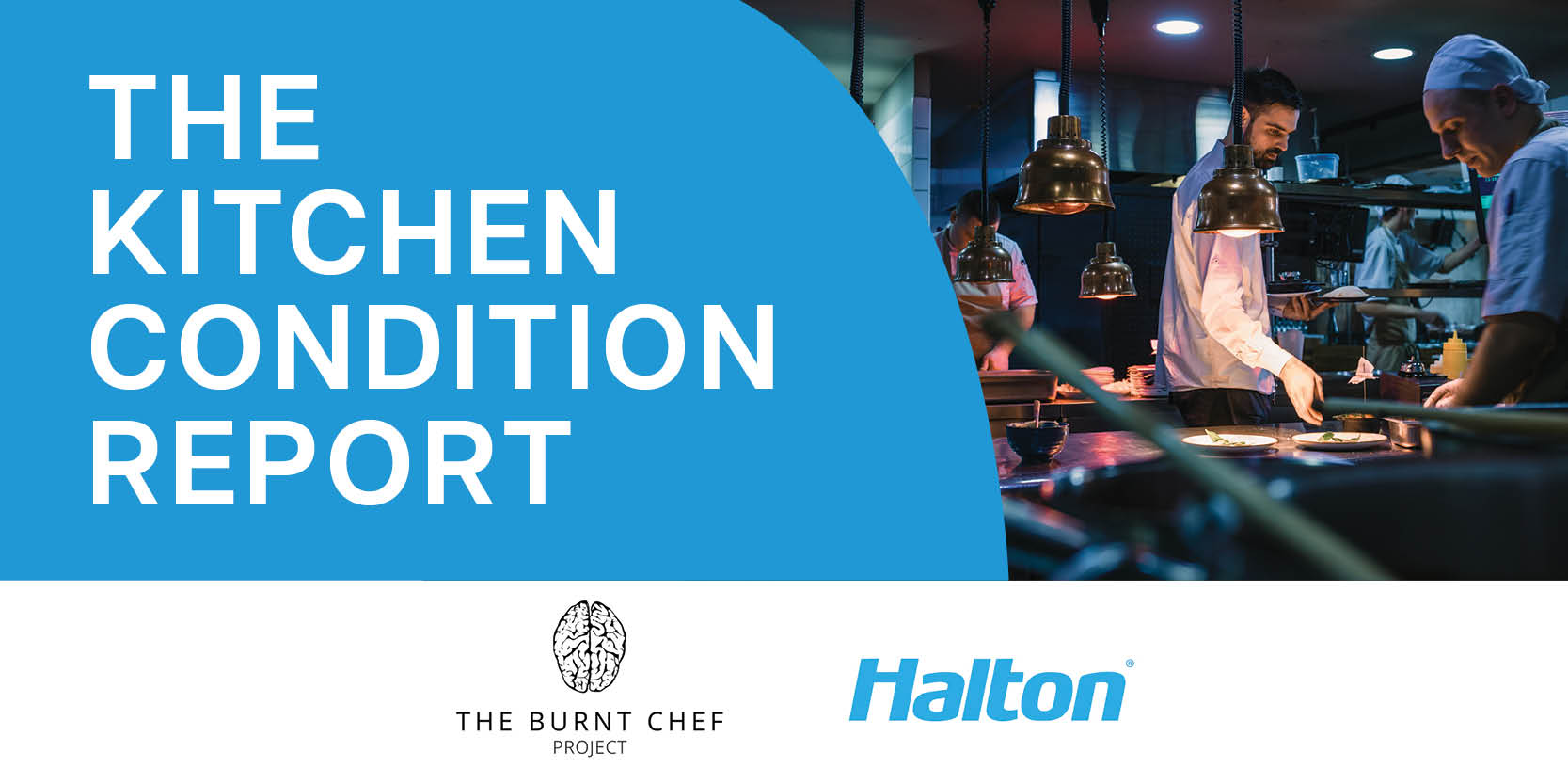
A groundbreaking new report featuring input from FCSI Professional member consultants, The Kitchen Condition, has been published by Halton Group and The Burnt Chef Project. Based on extensive survey data from 146 chefs across North America, the report highlights how sub-optimal kitchen environments are significantly impacting staff wellbeing – and triggering a staffing crisis across the hospitality sector.
The rationale behind the project, produced in collaboration with 1473 Media, was clear: the industry is hemorrhaging staff, yet the effect working conditions play in this has received little attention. By quantifying and analyzing the experience of chefs themselves, The Kitchen Condition (which can be downloaded here) provides data-led insights into how the industry’s workplaces can – and must – evolve.
Topline findings are stark. Almost four in five chefs reported difficulties recruiting new staff in the past year. Worse still, 79% of chefs have considered leaving the profession altogether. Working conditions were a common concern, with 90% of respondents saying poor environments hinder their ability to operate efficiently. An overwhelming 97% felt these conditions significantly harm their physical health. Fatigue, accidents, respiratory issues, and mental health challenges were all cited as common consequences.
Excessive heat and poor ventilation were ranked as the top environmental contributors to a negative working environment. At the same time, chefs said that simple improvements – from better temperature control to more ergonomic kitchen layouts – could convince them to stay in the industry. Encouragingly, many respondents acknowledged that appropriate staffing levels and better-designed spaces could meaningfully improve their quality of life and job satisfaction.
Changing the narrative
“The numbers in this report are startling,” said Kris Hall, CEO of The Burnt Chef Project. “But there are also positive signs – such as more chefs proactively looking after their health. It can be overwhelming trying to fix the wider issues, but taking a pragmatic approach to improving kitchen conditions will help. I feel positive we can change the narrative.”
Kai Konola, CEO of Halton Group, believes there are some relatively easy wins that could change the momentum. “Solutions are available – we just need to apply them more widely. Every part of the industry needs to contribute to creating great environments,” he said.
The Kitchen Condition report also features a panel discussion, held at The NAFEM Show 2025 in Atlanta, featuring leaders and ambassadors from The Burnt Chef Project – Kris Hall, Colleen Silk, Tom Mitchell, and Imrun Teixeira – and moderated by Michael Jones, editorial director FCSI’s Foodservice Consultant. The panelists’ insights – on how workplace design, ventilation, lighting, and mental health support can all drive better outcomes for chefs and businesses alike – are born from years of first-hand experience.
Brutally honest accounts from chefs and consultants working across North America – including Ken Schwartz FCSI of SSA, Inc., Joe Schumaker FCSI of Foodspace, FCSI Associate Shaunya Noble of The Noble Restaurant Group, Matthew Anderson of Rippe Associates, and Rose Cowell of Blodgett Oven Company – provide first-hand accounts of how critical the situation has become, while suggesting hope for the future.
“An inefficient kitchen lowers the productivity of not only the kitchen itself, but the staff too,” says Noble. “They are prone to getting overheated and overstimulated. If they feel like they can’t breathe, because the ventilation is poor, they’re also more likely to walk out,” she adds.
“We need to design kitchens that are thoughtfully ergonomic and friendly to the movement, the positioning, and even just the physical weights of things that are being moved around,” says Schumaker. “Let’s use design to make people’s jobs safer, easier and more comfortable.”
Further details:
To read The Kitchen Condition report and watch the full panel discussion, visit https://kitchen-conditions.halton.com
Michael Jones
